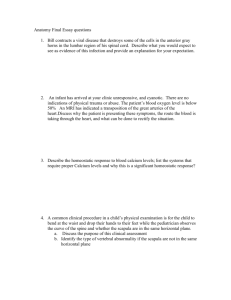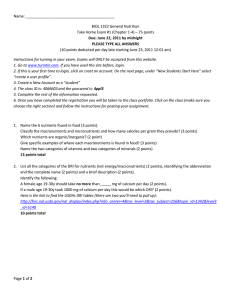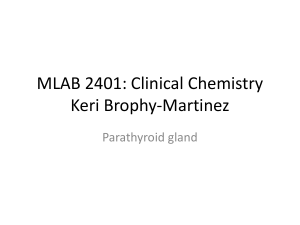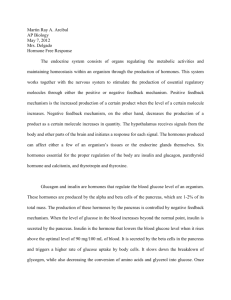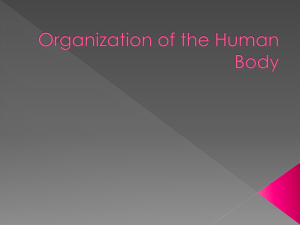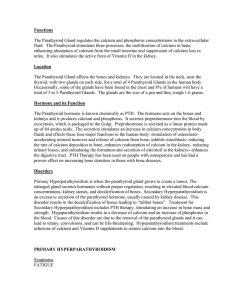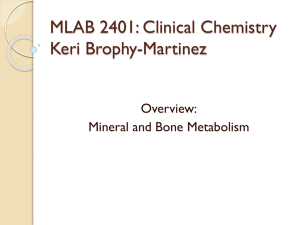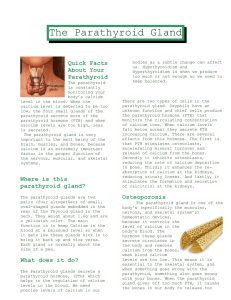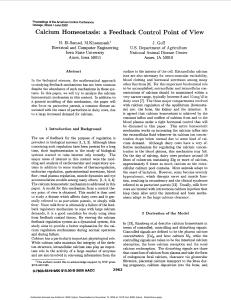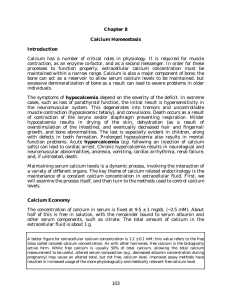Be careful with the two examples below
advertisement
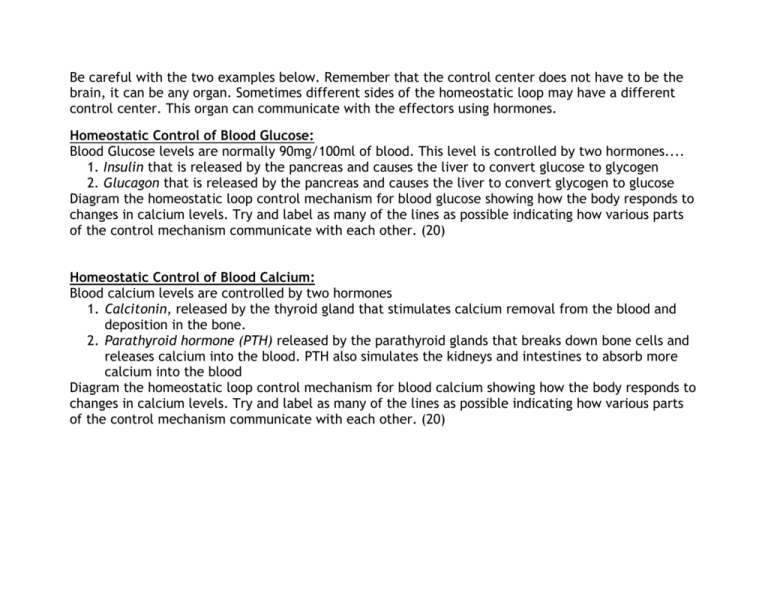
Be careful with the two examples below. Remember that the control center does not have to be the brain, it can be any organ. Sometimes different sides of the homeostatic loop may have a different control center. This organ can communicate with the effectors using hormones. Homeostatic Control of Blood Glucose: Blood Glucose levels are normally 90mg/100ml of blood. This level is controlled by two hormones.... 1. Insulin that is released by the pancreas and causes the liver to convert glucose to glycogen 2. Glucagon that is released by the pancreas and causes the liver to convert glycogen to glucose Diagram the homeostatic loop control mechanism for blood glucose showing how the body responds to changes in calcium levels. Try and label as many of the lines as possible indicating how various parts of the control mechanism communicate with each other. (20) Homeostatic Control of Blood Calcium: Blood calcium levels are controlled by two hormones 1. Calcitonin, released by the thyroid gland that stimulates calcium removal from the blood and deposition in the bone. 2. Parathyroid hormone (PTH) released by the parathyroid glands that breaks down bone cells and releases calcium into the blood. PTH also simulates the kidneys and intestines to absorb more calcium into the blood Diagram the homeostatic loop control mechanism for blood calcium showing how the body responds to changes in calcium levels. Try and label as many of the lines as possible indicating how various parts of the control mechanism communicate with each other. (20)
